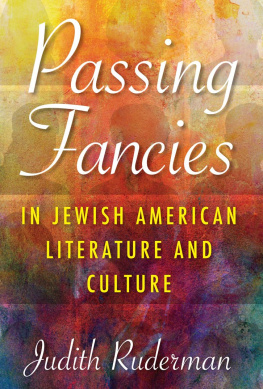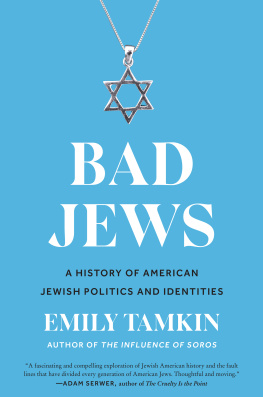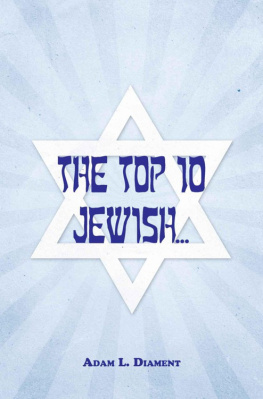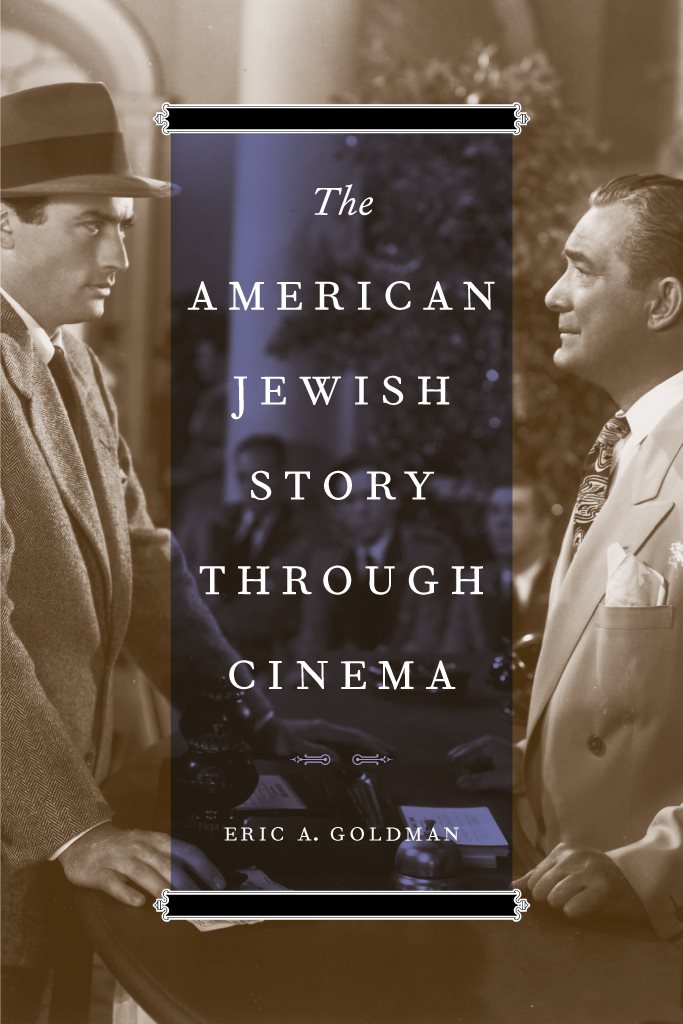THE AMERICAN JEWISH STORY THROUGH CINEMA
JEWISH HISTORY, LIFE, AND CULTURE
Michael Neiditch, Series Editor
THE AMERICAN JEWISH STORY THROUGH CINEMA
BY ERIC A. GOLDMAN

University of Texas Press
AUSTIN
The Jewish History, Life, and Culture Series is supported by the late Milton T. Smith and the Moshana Foundation, and the Tocker Foundation.
Publication of this book was made possible in part by generous grants from the Lucius N. Littauer Foundation, the Kronhill Pletka Foundation, and the Memorial Foundation for Jewish Culture.
Portions of this book have been published in earlier versions as The American Jewish Experience through the Lens of Cinema: Film History as Haggadah (New York: American Jewish Committee, 2008: 137; portions of monograph reprinted with the permission of AJC), and Avalon and Liberty Heights: Toward a Better Understanding of the American Jewish Experience through Cinema (American Jewish History 91/1 [March 2003]: 109127).
Copyright 2013 by the University of Texas Press
All rights reserved
Printed in the United States of America
First edition, 2013
Requests for permission to reproduce material from this work should be sent to:
Permissions
University of Texas Press
P.O. Box 7819
Austin, TX 78713-7819
http://utpress.utexas.edu/about/book-permissions
LIBRARY OF CONGRESS CATALOGING-IN-PUBLICATION DATA
Goldman, Eric A.
The American Jewish story through cinema / by Eric A. Goldman.
p. cm. (The Jewish history, life, and culture series)
Includes bibliographical references and index.
ISBN 978-0-292-74430-1 (cloth : alk. paper)
1. Jews in motion pictures. 2. Jews in the motion picture industryUnited States. I. Title.
PN1995.9.J46G48 2013
791.436552dc23
2012026734
doi:10.7560/744301
ISBN 978-0-292-74431-8 (e-book)
ISBN 9780292744318 (individual e-book)
For Susan
We dont see things as they are. We see them as we are.
ANAS NIN,
quoting what she describes as Talmudic words in Seduction of the Minotaur
CONTENTS
PREFACE
FILM AS HAGGADAH
TOWARD A BETTER UNDERSTANDING OF AMERICAS JEWS
There is growing recognition that feature films can be considered an important primary source for the study of twentieth-century life and our time. Since the birth of cinema, filmmakers have been providing us with films that reflect the world in which they live, and their work often affords great insights into the prevailing attitudes of that universe. Like the Haggadah, the traditional telling of the story of the Israelites exodus from Egypt that is read at the Passover seder, cinema offers a valuable text from which to gain an understanding of the social, political, and cultural realities of the era. Movies provide a powerful lens, a window on the past, an opportunity for historical examination.
Narrative feature films, despite almost always being fictitious, have the capability of reflecting on historical reality. Historian and sometime film critic Arthur M. Schlesinger Jr. asserted, The fact that film has been the most potent vehicle of the American imagination suggests all the more strongly that movies have something to tell us not just about the surfaces but about the mysteries of American life. His observation is assuredly true for an understanding of American Jewish life. This study uses the medium of cinema to provide an understanding of the changing situation of the American Jew over the last century.
Movies convey a great deal of information, not just through story but via images and backstorythe background history of why these movies were made, who produced them, and who went to see them. The inclusion of various oral histories and interviews with principals involved in production augments our comprehension of the films studied. Consideration of conditions surrounding film production is a key element in properly studying films. John OConnor argued that the cultural analysis of film demands that attention be given to the ways in which the artifact was understood by historical spectators at the time of its production and release. Why was this film produced? Who made it? Under what circumstances? Was the film widely distributed? Over the last half-century, historians have advanced a methodology for mining feature films for evidence of this history by contextual analysis: a close reading of the film, the circumstances of production, and the way the movie was understood by spectators at the time of its release.
Any work of this kind requires that the films themselves be carefully scrutinized and studied. Analysis of the motion picture is an essential part of this book, and that examination often focuses on specific sequences from a film, going beyond dialogue to study the visual symbols that are present in the motion picture and that bring about a reaction from the spectator. These sensory symbols, as K. R. M. Short observed, are extremely important in creating the appropriate emotional response or climate among the audience and often are so deeply part of a particular social or historical context that the foreign observer may be unaware of their emotive value. They may trigger an emotional response with one audience and go unnoticed by another. When Jakie Rabinowitz holds up a prayer shawl, a tallit, in The Jazz Singer, as he is being forced to make a choice between career and religion, this triggers a particular emotional response. Whether consciously or unconsciously, the reaction from the Jewish viewer may be very different from that of the foreign observer. In Avalon, the image of a train pulling into a station as relatives who survived the war arrive in Baltimore conjures up a very different reaction for those used to watching Holocaust films about mass forced deportations by train in Europe than it does for the uninitiated. Shot-by-shot analysis of the film provides a remarkable text for our understanding of the world that surrounds it and with which it communicates, but reactions may vary by audience.
French historian Marc Ferro noted that cinema should be seen as both a source of history and as an agent that helps shape history. The thrust of this study rests on the assumption that feature film can effectively be used as text for the study of the American Jewish experience, Jewish identity, and Jewish culture.
In the first half of the twentieth century, Hollywoods movie moguls, most of whom were Jewish, shied away from asserting a Jewish image on the screen for fear that they might be too closely identified with that representation. As Sklar pointed out, The movies were the first medium of entertainment and cultural information to be controlled by men who did not share the ethnic and religious backgrounds of the traditional cultural elites. Over the next two decades, Jewish moviemakers became more comfortable with the concept of a Jewish hero and with an overpowered, yet heroic, Israel. Then, as there was greater comfort broaching the topic of the Holocaust, it assumed center stage as the single greatest event impacting Jewish identity in America. Over the last two decades, American Jewish screenwriters, directors, and producers have become increasingly comfortable with their heritage. As a result, we are seeing an unprecedented number of movies that spotlight Jewish protagonists, experiences, and challenges. Just what are these critical Jewish visuals that have dominated the screen, and what is the inherent coding within these images?









